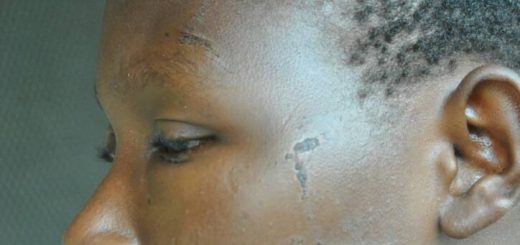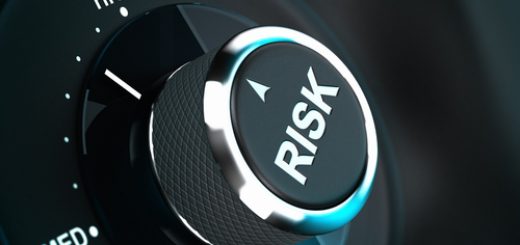Priapism.
 Priapism is a prolonged erection of the penis. The persistent erection continues hours beyond and is not as a result of by sexual stimulation or desires. Priapism is usually painful. Although priapism is an uncommon condition overall, it occurs commonly in certain groups, such as people who have sickle cell anemia. Prompt treatment for priapism is usually needed to prevent tissue damage that could result in the inability to get or maintain an erection.
Priapism is a prolonged erection of the penis. The persistent erection continues hours beyond and is not as a result of by sexual stimulation or desires. Priapism is usually painful. Although priapism is an uncommon condition overall, it occurs commonly in certain groups, such as people who have sickle cell anemia. Prompt treatment for priapism is usually needed to prevent tissue damage that could result in the inability to get or maintain an erection.
“Priapism is most common in men in their 30s.”
Symptoms
Priapism symptoms vary depending on the type of priapism. The two main types of priapism are ischemic and nonischemic priapism.
Ischemic priapism
Ischemic priapism, also known as low-flow priapism, is the result of blood not being able to leave the penis. It’s the most common type of priapism. Signs and symptoms include:
• An erection lasting more than four hours or unrelated to sexual interest or stimulation.
• Rigid penile shaft, but the tip of the penis (gland) is soft.
• Progressive penile pain.
 Recurrent or stuttering priapism
Recurrent or stuttering priapism
Stuttering Priapism form of ischemic priapism is an uncommon condition. It’s more common in males who have an inherited disorder characterized by abnormally shaped red blood cells (sickle cell anemia). Sickle cells can block the blood vessels in the penis. Recurrent priapism describes repetitive episodes of prolonged erections and often includes episodes of ischemic priapism. In some cases, the condition starts off with unwanted and painful erections of short duration and might progress over time to more frequent and more prolonged erections.
Non-ischemic priapism
Non-ischemic priapism, also known as high-flow priapism, occurs when penile blood flow isn’t regulated appropriately. Non-ischemic priapism is usually painless. Signs and symptoms include:
• An erection lasting more than four hours or unrelated to sexual interest or stimulation.
• Erect but not fully rigid penile shaft.
When to see a doctor
If you have an erection lasting more than four hours, you need emergency care. The emergency room doctor will determine whether you have ischemic priapism or nonischemic priapism. This is necessary because the treatment for each is different, and treatment for ischemic priapism needs to be done as soon as possible.
If you experience recurrent, persistent, painful erections that resolve on their own, see your doctor. You might need treatment to prevent further episodes.
Causes
An erection normally occurs in response to physical or psychological stimulation. This stimulation causes certain blood vessels and smooth muscles to relax and/or expand, increasing blood flow to spongy tissues in the penis. Consequently, the blood-filled penis becomes erect. After stimulation ends, the blood flows out and the peni s returns to its nonrigid (flaccid) state.
s returns to its nonrigid (flaccid) state.
Priapism occurs when some part of this system — the blood, blood vessels, smooth muscles or nerves — changes normal blood flow. Subsequently, the erection persists. While the underlying cause of priapism often can’t be determined, several conditions are believed to play a role.
Blood Disorders
Blood-related diseases might contribute to priapism — usually ischemic priapism when blood isn’t able to flow out of the penis. These disorders include:
• Sickle cell anemia.
• Leukemia.
• Other hematologic dyscrasias, such as thalassemia, multiple myeloma, and others.
The most common associated diagnosis in children is sickle cell anemia.
Prescription Medications
 Priapism, usually ischemic priapism, is a possible side effect of a number of drugs, including:
Priapism, usually ischemic priapism, is a possible side effect of a number of drugs, including:
• Medications injected directly into the penis to treat erectile dysfunction, such as alprostadil, papaverine, phentolamine, and others.
• Anti-depressants, such as fluoxetine (Prozac), bupropion (Wellbutrin), and sertraline.
• Alpha blockers including prazosin, terazosin, doxazosin, and tamsulosin.
• Medications used to treat anxiety or psychotic disorders, such as hydroxyzine, risperidone (Risperdal), olanzapine (Zyprexa), lithium, clozapine, chlorpromazine, and thioridazine.
• Blood thinners, such as warfarin (Coumadin) and heparin.
• Hormones such as testosterone or gonadotropin-releasing hormone.
• Medications used to treat attention-deficit/hyperactivity disorder (ADHD), such as atomoxetine (Strattera).
Alcohol and Drug.
Alcohol, marijuana, cocaine and other illicit drug abuse can cause priapism, particularly ischemic priapism.
Injury
A common cause of nonischemic priapism — a persistent erection caused by excessive blood flow into the penis — is trauma or injury to your penis, pelvis or perineum, the region between the base of the penis and the anus.
Other factors
Other causes of priapism include:
• A spider bite, scorpion sting or other toxic infections.
• Metabolic disorders including gout or amyloidosis.
• Neurogenic disorders, such as a spinal cord injury or syphilis.
• Cancers involving the penis.
Complications
Ischemic priapism can cause serious complications. The blood trapped in the penis is deprived of oxygen. When an erection lasts for too long, this oxygen-poor blood can begin to damage or destroy tissues in the penis. As a result, untreated priapism can cause erectile dysfunction.
 Prevention.
Prevention.
If you have recurrent or stuttering priapism, to prevent future episodes your doctor might recommend:
• Treatment for an underlying condition, such as sickle cell anemia, that might have caused priapism.
• Use of oral or injectable phenylephrine.
• Hormone-blocking medications — only for adult men.
• Use of oral medications used to manage erectile dysfunction.
Credited to Nonchalant Ezy Ogbu.




Thanks for finally writing about >Priapism. > Diaryofaudrey.com <Liked it!
Glad you did, stay glued for more information on sickle cell disorder.